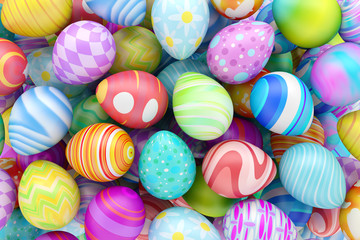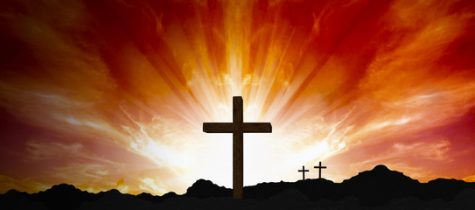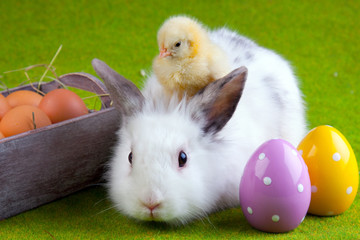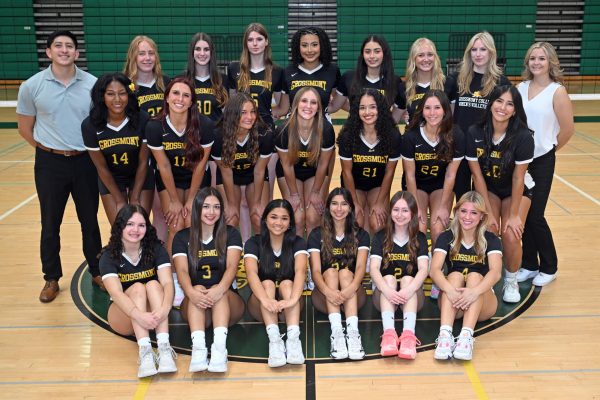Everything You Didn’t Know About Easter

April 12, 2019
Learn the history of Easter: the religious roots, the eggs and the bunny.
Little boys in pink shirts and bow ties frantically gather colored eggs while little girls in sun-dresses and floppy hats take pictures with a large, friendly bunny. This scene might trigger your memory of Easter as a child. Did you ever wonder about the origin of this holiday? Or were you too busy eating half-melted chocolate inside plastic eggs?
The celebration is rooted in an important event recorded in the Bible. Christians have celebrated Easter for 2,000 years. According to Crosswalk.com: “Easter is the celebration of the resurrection of Jesus from the tomb on the third day after his crucifixion. Easter is the fulfilled prophecy of the Messiah who would be persecuted, die for our sins, and rise on the third day.”

Leading up to Easter, Lent is practiced starting on Ash Wednesday and ends on Good Friday. Lent is supposed to
represent sacrificing and withdrawing from something that distracts from God. Currently, many people give up
social media, Netflix or alcohol for the 40-day period. Good Friday is the Friday before Easter, and is the day Jesus was crucified.
Although the day is remembered solemnly, Christians also celebrate it with gratitude and hope as they anticipate Easter morning. Easter morning represents new life for Christians because they believe Jesus conquered death by rising from the tomb. Instead of saying, “Happy Easter!” to one another, Christians will say, “He is risen!” as a joyful greeting.
However, the name “Easter” is found nowhere in the Bible. According to personalcreations.com: “The exact origins of ‘Easter’ are unknown, but some sources believe that the word ‘Easter’ is taken from the Teutonic goddess of fertility and spring—Eostre. Easter has also been traced to the Latin words Hebdomada Alba – meaning ‘White Week’ – referencing Easter week, in which white clothing is worn by people who get baptized.”
The plethora of decorations used on Easter are symbolic for different parts of this special Sunday.
• Crosses: These symbols refer to Jesus’ crucifixion, when He died on a cross.
• Tomb: The tomb was where Jesus’ dead body was kept and mourned over for three days.
• Lamb: Lambs represent the Son of God. Jesus sacrificed himself, as a sacrificial lamb in the Biblical times, for humanity.
However, you might more commonly see decorations of the Easter bunny and brightly-colored Easter eggs. So where
did the new traditions come from?
Tiffany Chambers, a Grossmont student, answered for the majority of the population when she said: “I don’t know.
That’s really weird, honestly. I’ve never really thought about the relation.” The Easter bunny can be found at malls
in the weeks anticipating Easter with children sitting on its lap (smiling or crying) for pictures.

According to Time.com: “The exact origins of the Easter bunny are clouded in mystery. One theory is that the
symbol of the rabbit stems from pagan tradition, specifically the festival of Eostre—a goddess of fertility whose
animal symbol was a bunny. Rabbits, known for their energetic breeding, have traditionally symbolized fertility.”
Brianna Burton, a second-semester student at Grossmont, said she didn’t know the origins of the Easter bunny
either. However, she said, “It might be similar to Santa Claus. If you’re good you get a gift.”
In this case, that gift is an Easter basket. Burton said her Easter Sunday is always a giant family celebration where
her grandparents take care of the classic Easter activities like egg painting, egg hunts and baskets.
Burton said: “It’s a tradition passed down. Eventually my parents will do it, and then eventually I’ll do it.”
Another theory of the bunny’s lineage as offered by History.com: “According to some sources, the Easter bunny first
arrived in America in the 1700s with German immigrants who settled in Pennsylvania and transported their
tradition of an egg-laying hare called ‘Osterhase’ or ‘Oschter Haws.’ Their children made nests in which this creature could lay its colored eggs.” It continued: “Decorating eggs for Easter is a tradition that dates back to at least the 13th century, according to some sources. One explanation for this custom is that eggs were formerly a forbidden food during the Lenten season, so people would paint and decorate them to mark the end of the period of penance and fasting, then eat them on Easter as a celebration.”
Despite its roots, the holiday is enjoyed by people, regardless of religious affiliation. Chambers said: “I’m not really a
religious person, so there’s not that meaning to it. It’s just something I do with my family to spend time with
them.”
Egg hunts are also a popular aspect to this Sunday, and can be community events or done within one’s own family.
The eggs are often filled with candy, trinkets, or Burton’s and Chamber’s favorite prize— money.
Whether you’re celebrating Easter this year or not, eating jelly beans out of plastic eggs isn’t a bad way to spend the
afternoon.













